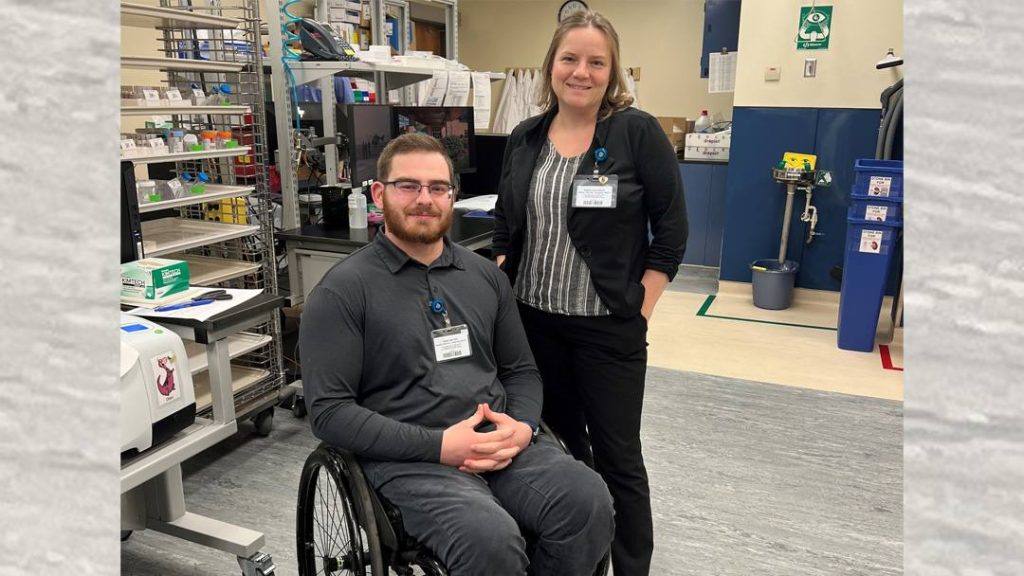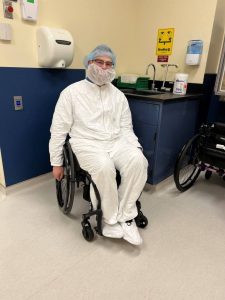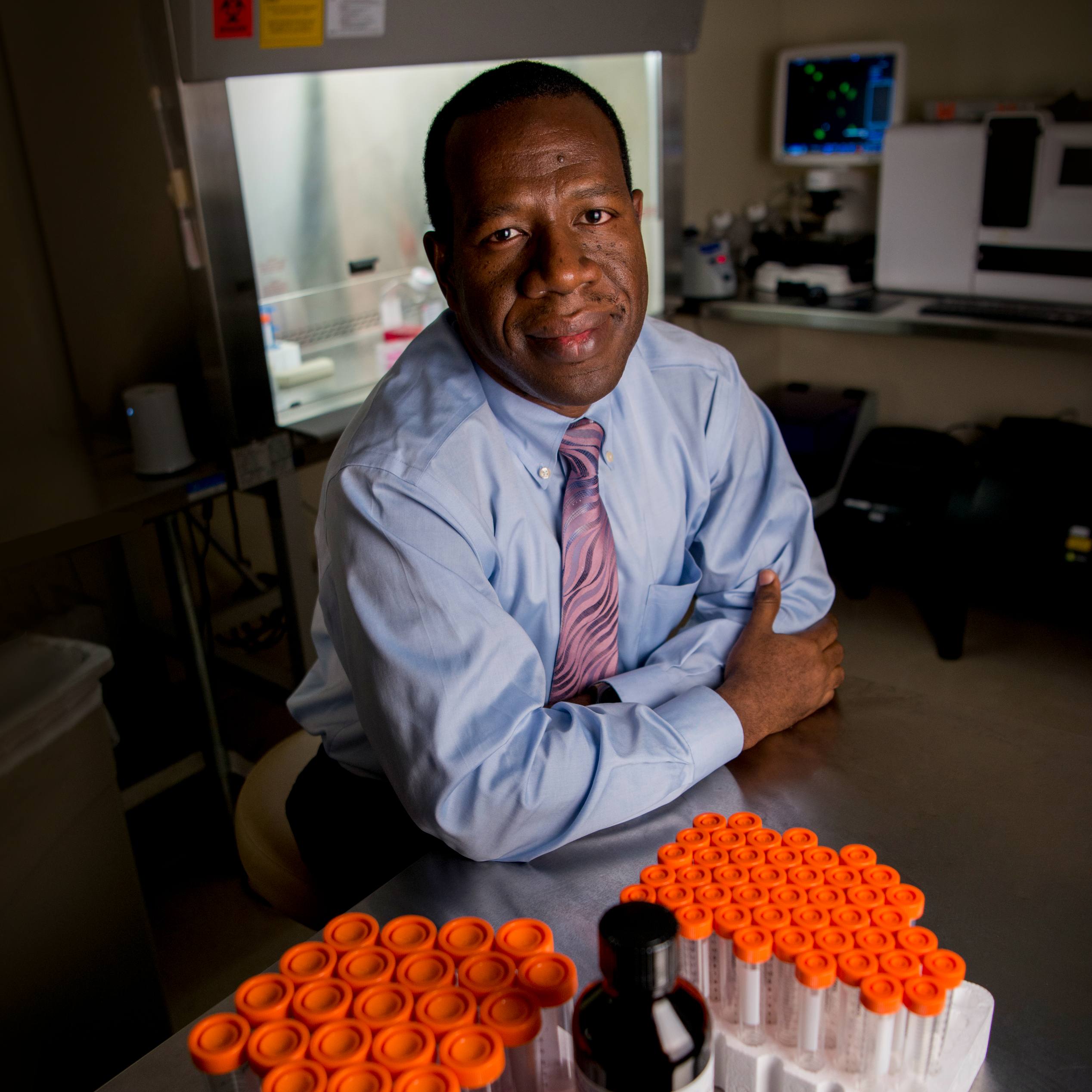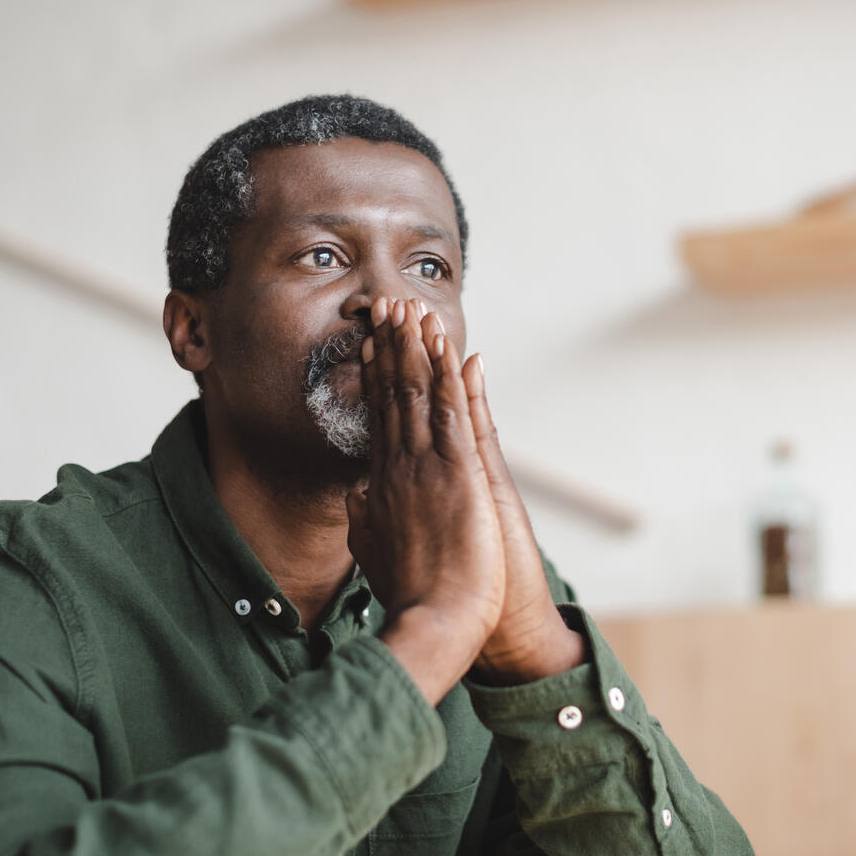-
Mayo Clinic’s inclusive onboarding sets new standard in lab accommodations

After Conor Peck cleared the initial interview panel for a clinical laboratory technologist role in the Department of Laboratory Medicine and Pathology at Mayo Clinic in Rochester, Minnesota, it didn't take long for him to catch Brigette Baig's attention.
"He has a biochemistry degree, and we like chemistry people in our lab," says Baig, supervisor of the Metals Laboratory. "I called him to just give him an informal tour of the lab using FaceTime."
She was impressed by his response to the experience.
"When you do an informal walkthrough and lab tour through FaceTime, it can be very awkward and overwhelming for the other person," Baig says. "But Conor just seemed to take it in easily and naturally, and he had great follow-up questions."
Toward the end of the tour, Peck disclosed something to Baig: He is a self-described "seasoned paraplegic" and uses a wheelchair.
"He didn't have to disclose any of that," says Baig.
The disclosure did nothing to dim Baig's enthusiasm for Peck's candidacy, and she ultimately offered him a position, which he accepted.
But before he could begin, he'd need to go through a unique onboarding process.
All onboard
The onboarding process began with a Post Offer Placement Assessment, where Peck shared the workplace accommodations he would need. He then began meeting with Mayo staff, including an ergonomist and a senior disability compliance adviser, to ensure the accommodations would be met.
Those accommodations included figuring out how to incorporate a wheelchair into the Metals Lab, which is an ISO class 7 clean room. That means there are stringent requirements for keeping particles and contamination to acceptable levels in the room to ensure accurate testing. To meet that requirement, Peck would need a dedicated wheelchair that could be sanitized and left on-site for lab use only.
"Our vision from the wheelchair perspective was to just treat it like another piece of equipment," Baig says. "We already have chairs in the laboratory that we wipe down and clean."
Peck owned a second wheelchair that he was willing to keep at the lab.
"I had a spare one, and I did some real surface-level research to see if converting it would work," Peck says. Additional research and conversations with staff in the Metals Lab revealed that it would. "We got some new wheels, a cushion and a back that are more resistant to chemicals and contamination."

Next, Peck needed to find a way to gown up. While his colleagues wear hazmat suits — coveralls with a hood that Baig likens to a onesie — that option wouldn't work for Peck. Baig ordered different gown options for him to try, and he chose what worked best for him: separate jacket, pants, shoe covers and head covering.
Finally, the lab itself had to be wheelchair accessible. Before Peck arrived, Baig arranged a full assessment of the workspace so she could start putting in any necessary construction requests.
"We did a walkthrough and measured all of our aisles to make sure that they were accessible for him," Baig says. "We put a checklist together that examined every area and made us ask questions like, 'Is this an issue?' 'Is that an issue?'"
Peck is grateful for the efforts of Baig and others he met during his onboarding.
New possibilities
Peck is the first and, so far, only wheelchair user on staff in the Department of Laboratory Medicine and Pathology in Rochester. But he hopes that may change — that he and the Metals Lab have helped pave the way for others with similar visible disabilities to follow in his tracks.
"What they did for me was just really something that I hadn't experienced before in other positions and other labs," he says. "How people, without knowing me, cared enough about the situation to make those accommodations for me."







